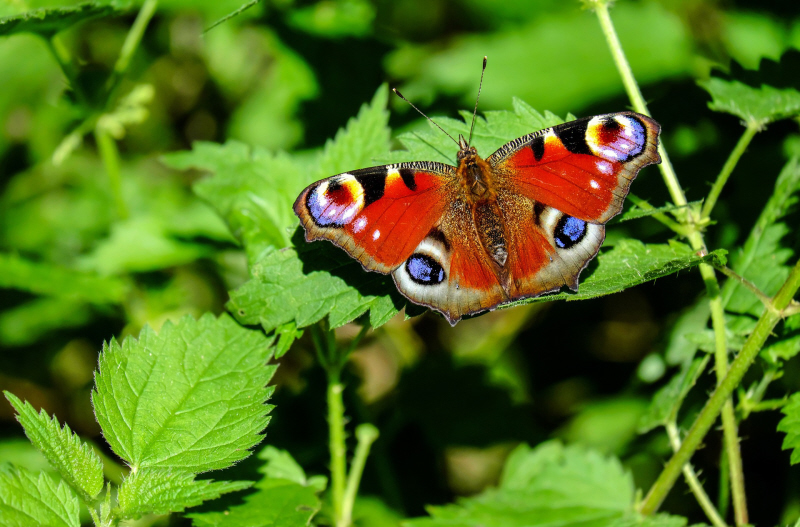
07 Apr Butterfly Spring
Summer comes on the wing of a butterfly.
There is something transient and ethereal about a butterfly. A brief life, wings that seem no more than tissue paper, a constancy of movement and a love of sunshine. The first butterfly of the year brings with it hope for the summer.
This year, with its weeks of warm, dry spring weather, has brought so much promise. A peacock was the first butterfly of the year, seen on 9 March, in the arable fields on the edge of the village. It arrived with the first chiffchaff.
Soon after that, a comma appeared sunning in the ride of the new copse and small tortoiseshells have been haunting the beet fields, warming themselves on the bare earth lying cultivated and bone dry waiting to be drilled.
In the garden, a peacock was also the first butterfly to arrive but has been quickly followed by a brimstone and a courting pair of small tortoiseshells. Yesterday, an orange tip arrived with the first swallow (5 April) – both earlier than my annual records. The orange-tip does not usually overwinter as an adult so truly suggests that summer is on its way.
Or maybe the abundance of butterflies this year is nothing more than heightened awareness having finished reading Matthew Oates’ engaging and detailed account of his 50 years of butterflying – In Pursuit of Butterflies (2015).
Understanding butterflies is something of a determined and obsessive hobby as their metamorphic lifestyle will point to different habits, plants and places, depending on whether the butterfly is at egg, caterpillar, pupa or adult stage. I learned much from Matthew’s book, and much that I had forgotten, as the butterflies of the arable east are far fewer than encountered in his travels through woods, glades, limestone meadows and upland heaths across the UK. It also reminded me how much has been lost – all the butterflies of my childhood.
Identifying butterflies takes patience, waiting for them to settle, as their air-borne dance can be swift and dizzymaking. They are restless and take no heed of barriers to their pursuit. Binoculars do not help in bringing them close and they have no song or call to help. Caterpillars are slightly easier but still have to be found through careful examination of the underside of leaves. One can’t help admire the diligence and detailed observation of the butterflyer as he, or she, pursues the 59 species occurring in the British Isles.
Matthew introduces his book by describing his purpose:
“The butterflies and the special places they inhabit do matter, and need speaking for. What is written here is written on their behalf, that others might get to know them better…these chapters are a celebration of a half-century of butterflying, a eulogy and a paean on the beauty and wonder of British butterflies.”
I join with Matthew calling for greater interest and involvement with butterflies. One look at their nectar plants for example suggests we need to care more for bramble, bugle and buttercup, as well as the humble dandelion.
I have checked my butterfly sightings against 2017’s first records and, of course, I am not the first. http://butterfly-conservation.org/52/First-sightings.html
And I can follow passionate butterflyers on their twitter feed here: https://twitter.com/ukbutterflies
Both websites are full of information which will help me identify butterflies and provide the right habitat for them.


